“Look at us. We're almost totally dependent on our maid. She cooks and washes for us, and is the first person to greet me when I come home from work. She is entirely at our service.” 하녀 [Hanyeo / The Housemaid] (Kim Ki-young, 1960)
Nov
13
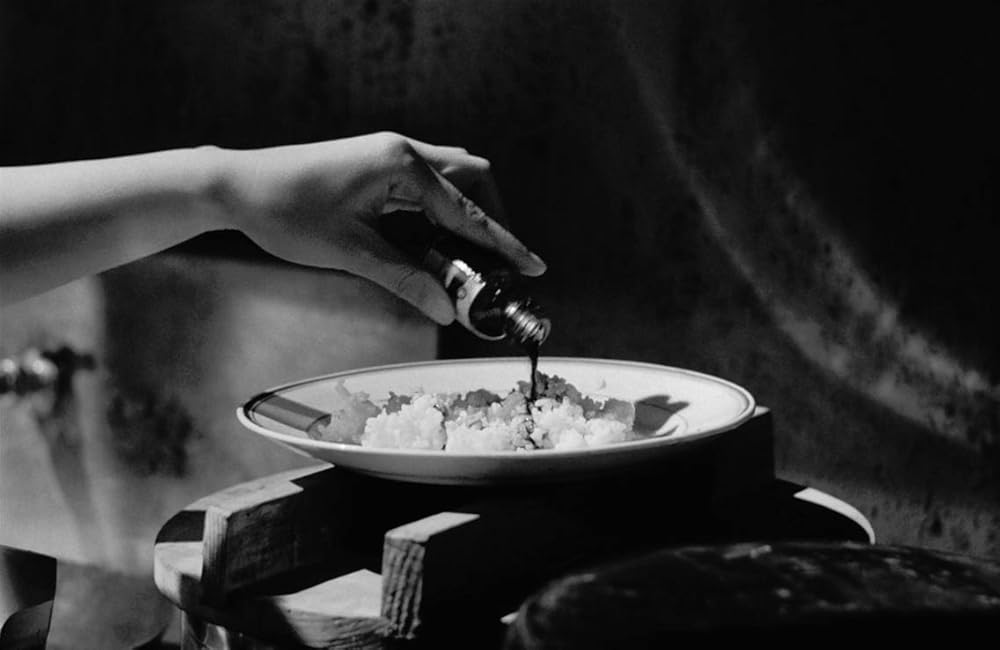
Adding one more ingredient. DP: Deok-jin Kim.
A memorable kitchen or cooking scene*
– Dong-sik Kim
A housemaid works her way into a middle-class household and takes over the wife's tasks – cleaning, cooking, child rearing.
* the Bales 2025 Film Challenge for November is, again, not date-based, but follows a sloppy schmaltzy all-American Thanksgiving-y narrative. Trying to make it work my way.
melodrama
“Purr Francine! Purr, purr Francine!”Polyester (John Waters, 1981)
Nov
10
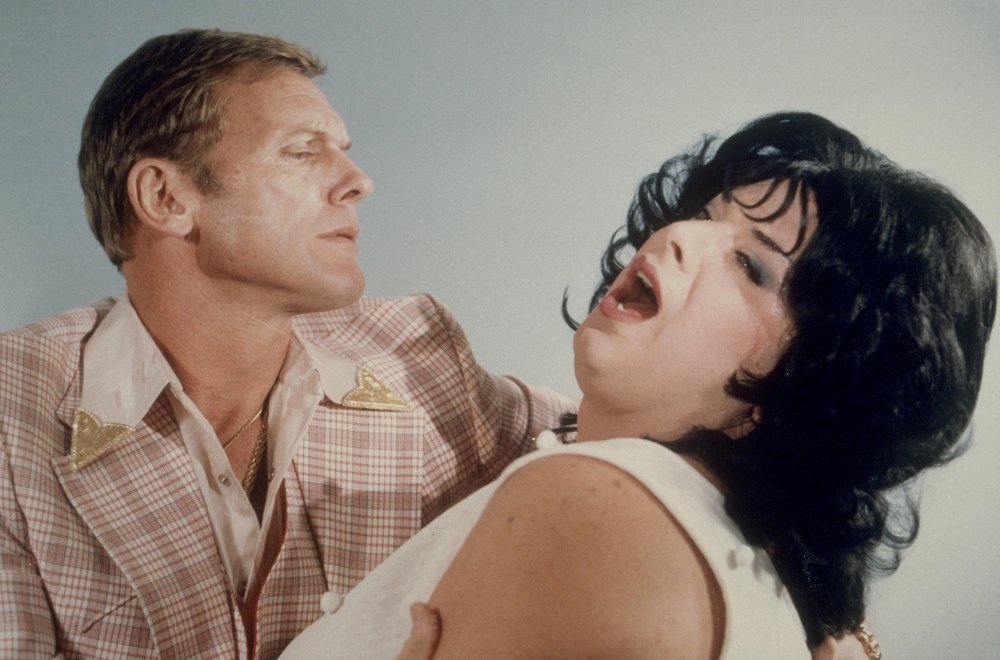
Todd Tomorrow (Tab Hunter) and Francine Fishpaw (Divine) in wild ecstasy. The scene appears to evoke a moment of passion between Chris Flanders (Richard Burton) and Flora Goforth (Elizabeth Taylor) in Boom! (Joseph Losey, 1968). DP: Dave Insley.
– Cuddles Kovinsky
Estate violenta [Violent Summer] (Valerio Zurlini, 1959)
Jul
25
1943
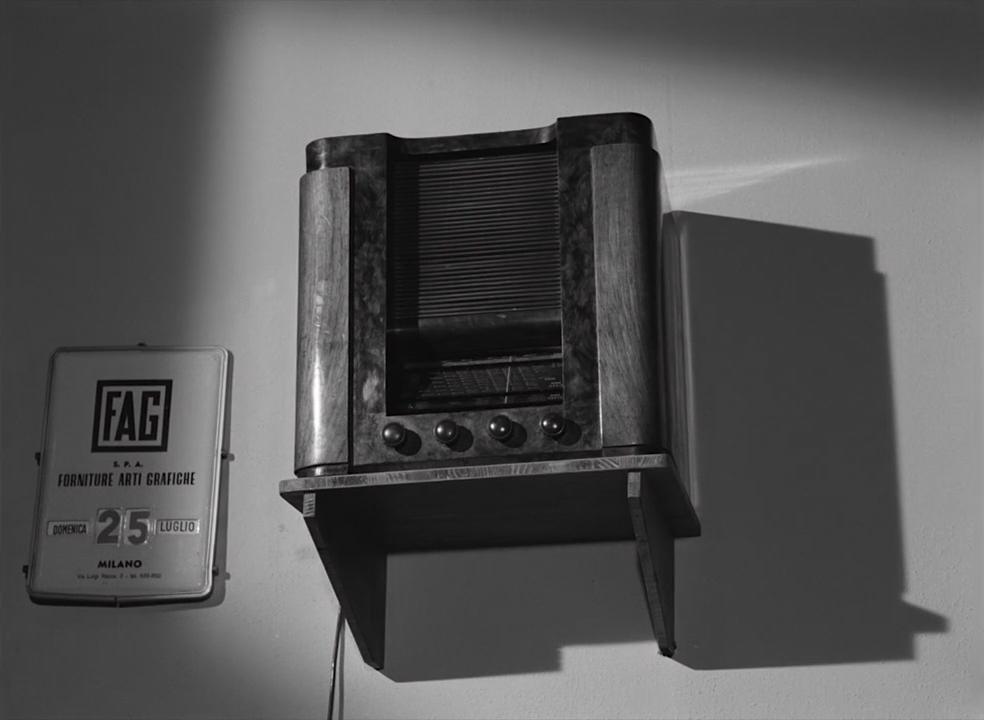
A large radio on a small pedestal. A perpetual wall calendar next to it reads DOMENICA 25 LUGLIO. DP: Tino Santoni.
“It would be thrilling if you were willing,
and if it can never be, pity me,
for you were born to be kissed,
I can’t resist, you are temptation,
and I am yours!” Estate violenta [Violent Summer] (Valerio Zurlini, 1959)
Jul
19
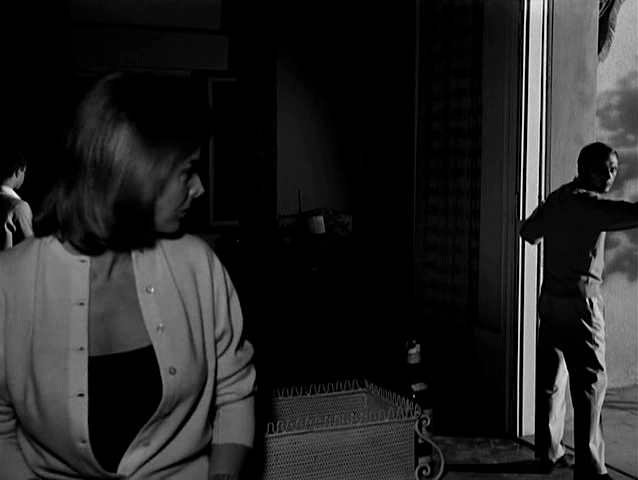
Roberta (Eleonora Rossi Drago) and Carlo (Jean-Louis Trintignant). DP: Tino Santoni.
Characters go on a date, or fall in love*
– Nacio Herb Brown & Arthur Freed, Temptation (1933)
On a beautiful summer day in Rimini, Carlo, the handsome son from a bourgeois home, saves a little girl and becomes infatuated with the girl's mother, a young widow years his senior. Set in July 1943, the events in the outer world (poss. spoilers) and the fate of the two uneven lovers slowly come to their logical conclusion.
* the Bales 2025 Film Challenge for July is, for unknown reasons, mostly not date-related and follows some sort of vacation narrative.
“Nobody shoves dirty money in my mouth.”The Naked Kiss (Samuel Fuller, 1964)
Jul
4
1961
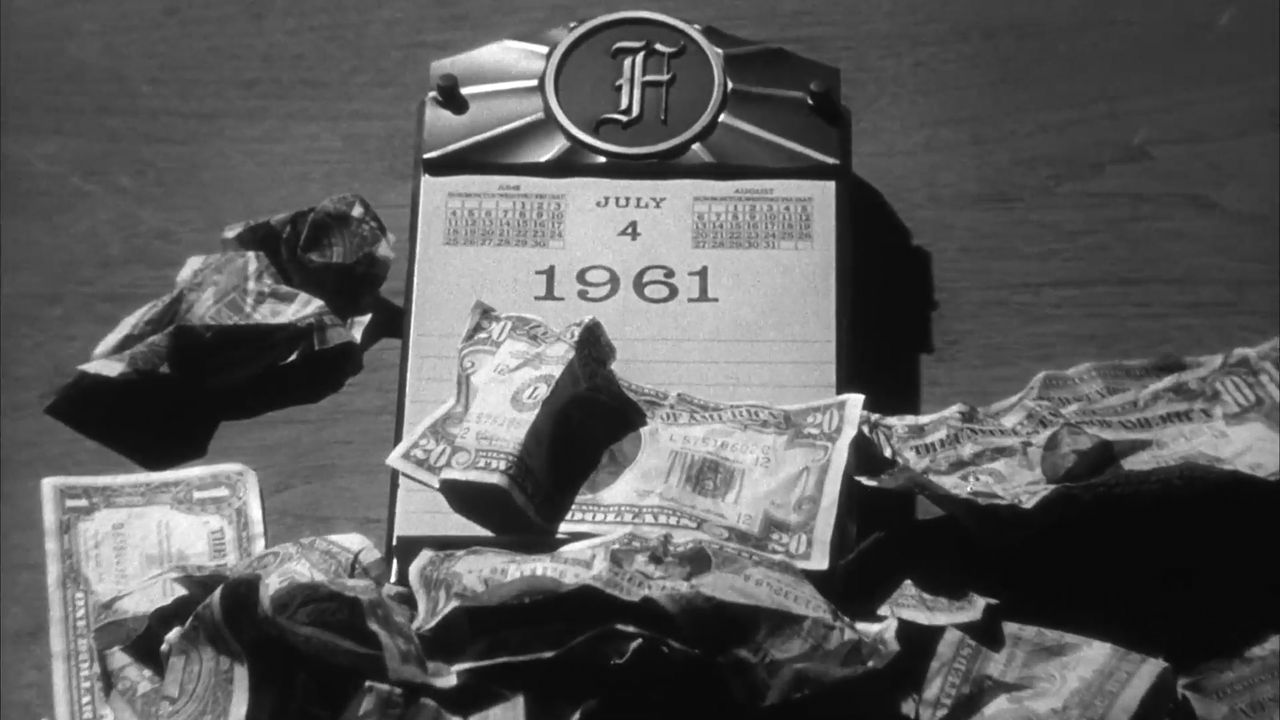
A desk calendar reading July 4, 1961, with dirty, crumpled dollar bills thrown on top of it. DP: Stanley Cortez.
– Candy
“You've won a doll and a kiss. I'll give you the doll and your girl can give you the kiss!”Lonesome (Pál Fejős, 1928)
Jul
3
Sat

An alarm clock informs us it's 7:15 while the calendar adds that it's the 3rd on a Saturday. Next to the alarm a crumpled up ladies' magazine. DP: Gilbert Warrenton.
– Coney Island barker
“What mystery, what beauty.”Stromboli (Terra di Dio) [Stromboli] (Roberto Rossellini, 1950)
May
8
birthdays
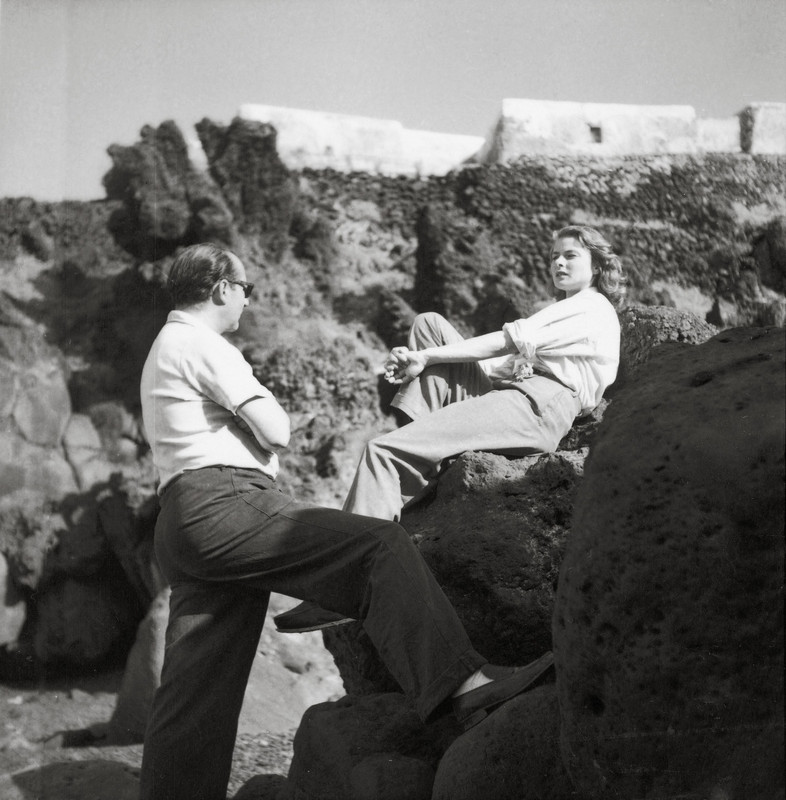
Roberto Rossellini and Ingrid Bergman on set on Sardinia. In the background the house Bergman's character moves into with her husband. DP: Otello Martelli.
May 8 is both director Rossellini and Bergman's character Karen's #birthday.
– Karen
鴎よ、きらめく海を見たか めぐり逢い [Kamome-yo, kirameku umi o mitaka/meguri ai / Oh Seagull, Have You Seen the Sparkling Ocean? An Encounter] (Kenji Yoshida, 1975)
May
30
Pokkī

A young woman in a red-and-white striped sweater (Yōko Takahashi) leafs through fashion magazines strewn out before her on a grass-green carpeted floor while chewing a Pokkī. On a small stove close to her a fire truck red coffee pot. DP: Kōshirō Ōtsu.
Colloque de chiens (1977)
Monique (Silke Humel, R) spending Christmas Eve in a bar, looking for a way out. She's speaking to an elderly man in an expensive tuxedo. Is this it? DP: Denis Lenoir; still photographer Patrice Morere.
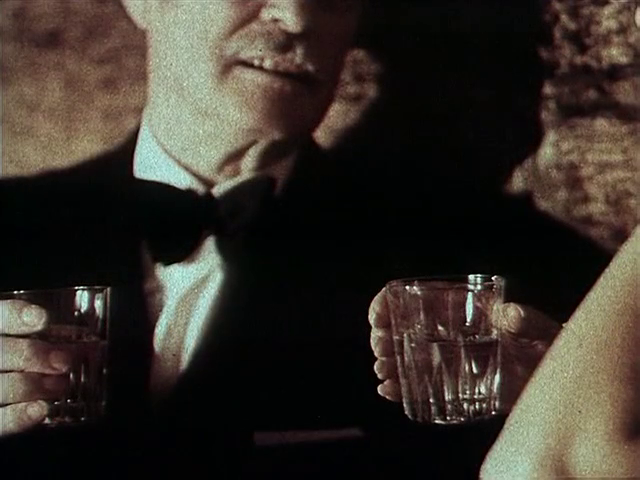
December 24: the night before Christmas (Christmas Eve)
Colloque de chiens (Raúl Ruiz, 1977)
“Nobody knows why Monique, the cold and dry voiced whore, bears in her eyes the sadness and tiredness of her past.”
Filmed during an actors' strike, Raúl Ruiz's Colloque de chiens consists for the most part of still photographs with mixed in stolen moving footage of unsuspecting bystanders and stray dogs. Told in fotonovela format, we follow the pitiful account of Monique, who as a young girl, learns that her mother is not who she thinks she is. Rejected, she throws herself into a life of vice until she meets Henri, a handsome young television repairman. Together they buy a small café, and are happy for once. But the cyclical nature of life determines her faith.
Raúl Ruiz's work is, like Henri's modus operandi, determined by maps and patterns. Even in the short comically melodramatic breathe of Colloque de chiens, the map has been laid out for Ruiz's later, much more complex narrative.
Colloque opens in a barren landscape. There are the skeletal towers of a nearby city, and the endless barks of abandoned dogs. Obscured by tall reeds, a blown-up photograph of a young man. The face, soft and familiar, a distant memory.
“He wanted to be returned to the world of his childhood and to this woman who was perhaps waiting for him” –Chris Marker, dialogue from La Jetée (1962)
Amongst bare winter bushes a large photo of a friendly, young, familiar looking man. In the background against a grey sky multiple white apartment buildings.
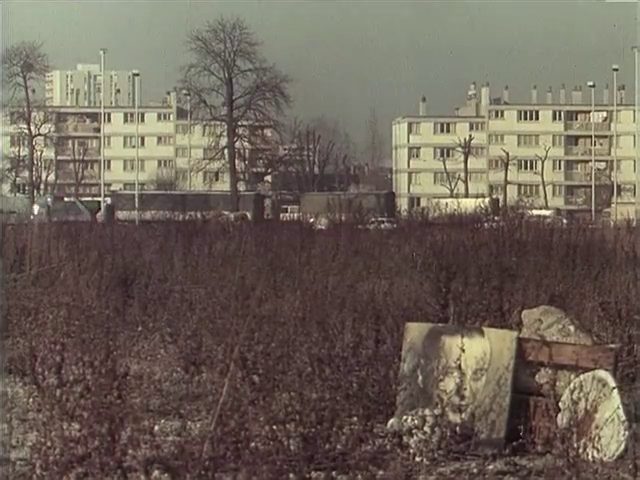
#Bales2023FilmChallenge #RaúlRuiz #SilkeHumel #EvaSimonet #RobertDarmel #JorgeArriagada #DenisLenoir #PatriceMorere #drama #crime #melodrama #ShortFilm #photography #animals #gender #prostitution #France #1970s ★★★★☆
– Can such miracles really happen?
– You and I are living proof.La Belle et la Bête [Beauty and the Beast] (Jean Cocteau + René Clément, 1946)
Nov
28
Giving Tuesday
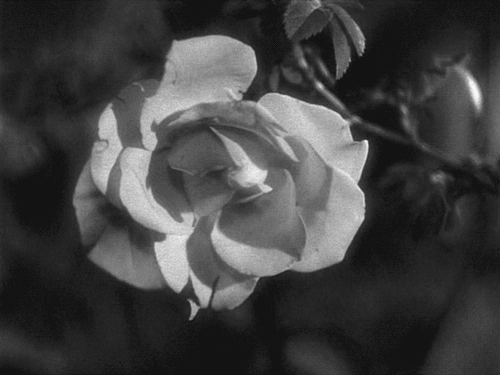
The most beautiful flower, a rose, in La Bête's enchanted garden. DP: Henri Alekan.
Someone is given something special for Giving Tuesday (USA)
Just before leaving home for a business trip, a father asks his three daughters what he can bring them as a return gift. The eldest two ask for silly, extravagant things. A monkey! A parrot! The youngest simply wishes the most beautiful flower which the father finds in an enchanted garden, guarded by a terrible beast. And will pay for with his life unless he gives his youngest away to the beast, to die in his place.
#Cocteau and Clément's La Belle et la Bête is of course based on Gabrielle-Suzanne Barbot de Villeneuve's fairy-tale, which on its turn was based on the classic myth of Cupid and Psyche.